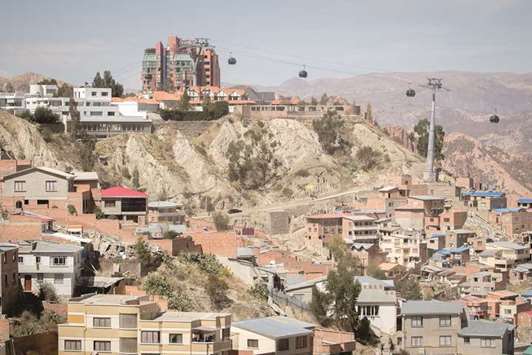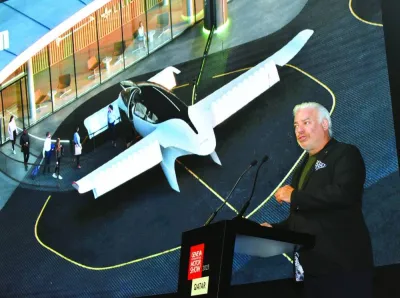A trip on the cable car connecting the Bolivian capital, La Paz, with the satellite city of El Alto offers stunning views of the Illimani Mountain capped with snow. In another view from the cable line running at up to about 4,000 metres above sea level, reddish brick houses and skyscrapers sprout out of the El Alto hillside rising to the plain where that city lies.
Visitors travelling on the cable car hold their breath at the sight of distant mountain ranges that seem to touch the clouds. But for the inhabitants of La Paz, the 800-million-dollar, 35-kilometre Mi Teleferico - touted as one of the world’s 10 first inter-city cable transport systems when it was inaugurated in 2014 has turned out to be something of a disappointment.
Mi Teleférico, also known as Teleférico La Paz–El, is an aerial cable car urban transit system serving the La Paz–El Alto metropolitan area in Bolivia. As of July 2018, the system consists of 22 stations along seven lines: Red, Yellow, Green, Blue, Orange, White, and Sky Blue. Another four lines are in planning or construction: Purple, Brown, Silver, and Gold.
Few people travel on some of its seven lines because of the high cost of cable car rides, economic analyst Franz Rafael Barrios said in a statement. The number of vehicles in La Paz, both private and belonging to the public transport system, has increased to 407,621 from 280,000 over the past six years, according to figures given by the city hall.
The city of about 800,000 residents suffers from massive traffic jams, and the cable car system was expected to be an important part of the solution, as has happened in some Latin American cities. Every wagon can carry up to 10 passengers. The system has already transported 135 million people, according to Cesar Dockweiler, head of the state-owned company Mi Teleferico that operates it.
Two of the seven lines go down from El Alto, at an altitude of 4,100 metres, to Bolivia’s government seat, La Paz, the South American country’s capital alongside Sucre, at 3,640 metres.
Mi Teleférico was planned in order to address a number of problems, including a precarious public transit system that could not cope with growing user demands, the high cost in time and money of traveling between La Paz and El Alto, chaotic traffic with its subsequent environmental and noise pollution, and a growing demand for gasoline and diesel fuel, which are subsidised by the state.
The relatively high cost of the cable car rides, however, is dissuading many potential users. A ticket costs 3 bolivianos, 0.40 cents, considerably more than taking a minibus for only 2 bolivianos.
Mi Teleferico is most popular among the residents of El Alto, for whom it saves a lot of time when travelling to their workplaces in southern La Paz. Despite its relative lack of popularity, the cable car system is due to get three more lines by next year, sparking criticism of its rising cost. The total cost of the extended cable car system will come up to a billion dollars, which is four times the budget of La Paz, the city’s mayor, Luis Revilla, told the daily Pagina Siete.
With that amount of money, “the transport problem in the metropolitan area of La Paz could have been solved by building bridges, viaducts, by buying buses,” he added. “The cable car was initially a practical solution to public transport problems in La Paz. But recently, there has been a political need to continue paying the same company to extend its lines without that always being justified,” Barrios said.
Corruption suspicions tarnished the very construction of Mi Teleferico due to the role played by the company Cotienne, which built terminals for the cable car system constructed by Austria’s Doppelmayr. It was not in a situation of free competition that his company was chosen to do engineering work for the La Paz cable car system, opposition senator Oscar Ortiz has suggested. – DPA

SCENERY: A trip on the cable car connecting the Bolivian capital, La Paz, with the satellite city of El Alto offers stunning views of the Illimani Mountain.


